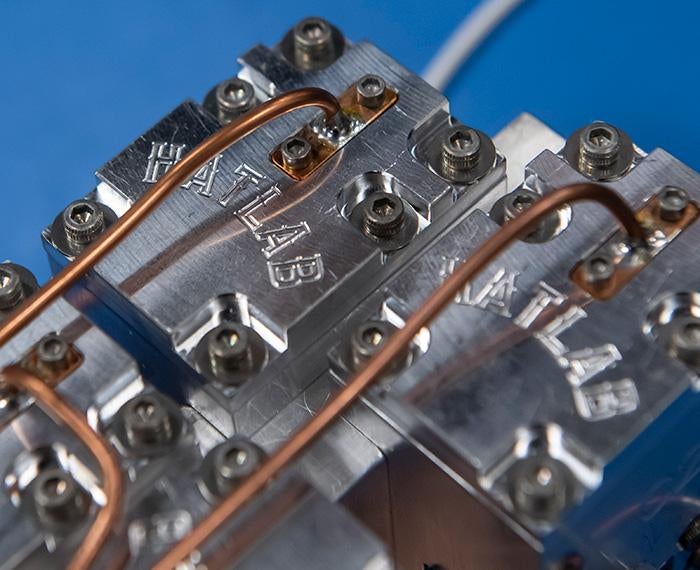
Subscribe to Pittwire Today
Get the most interesting and important stories from the University of Pittsburgh.Michael Hatridge earned $5.7 million in research funding from the U.S. Army

The U.S. Army has awarded more than $5.7 million for two projects led by Michael Hatridge, associate professor of physics and astronomy in the Kenneth P. Dietrich School of Arts and Sciences. Both projects bring together a diverse group of researchers to overcome roadblocks in the field of quantum computing.
A four-year, $2.67 million grant is aimed at the next generation of modular quantum computing systems. Hatridge and co-principal investigators Robert Schoelkopf of Yale University have each developed unique methods to link qubits over long ranges.
With the help of Alex Jones, professor in the Swanson School of Engineering and co-principal investigator on the grant, they hope to bring these methods together, operating in tandem, to develop a new kind of quantum computing system. Jones will explore the best ways to leverage the unique properties of each method using the modular quantum computing system developed in Hatridge’s and Schoelkopf’s labs.
Once complete, the team will have developed new hardware approaches to designing superconducting quantum computers with powerful processors that bring the field a step closer to error-detected operations, or the ability to solve problems consistently and accurately.
The Army has also awarded Hatridge’s amplifier a four-year, $3.03 million grant for projects related to both the physics and the fabrication of parametric amplifiers, or “paramps,” which are necessary components of the processors that lie at the heart of quantum computing. The project’s principal investigators include David Pekker, assistant professor of physics in Pitt’s Dietrich School; José Aumentado, a physicist at the National Institute of Standards and Technology; and Hakan Türeci, an engineering professor at Princeton University.
Building paramps that satisfy the needs of these high-tech processors has been a challenge: They need large, instantaneous bandwidths and the ability to process multiple and large signals. Paramps also require must add minimal noise to amplified signals, currently Hatridge’s team’s amplifiers are within a factor of two of the ultimate limit allowed by quantum mechanics.
In the next four years, Hatridge and his team will work to better understand how the rules of physics limit paramps’ performance. The team also aims to develop and produce practical devices to move the field toward the next generation of processors.
— Brandie Jefferson, photography by Aimee Obidzinski

